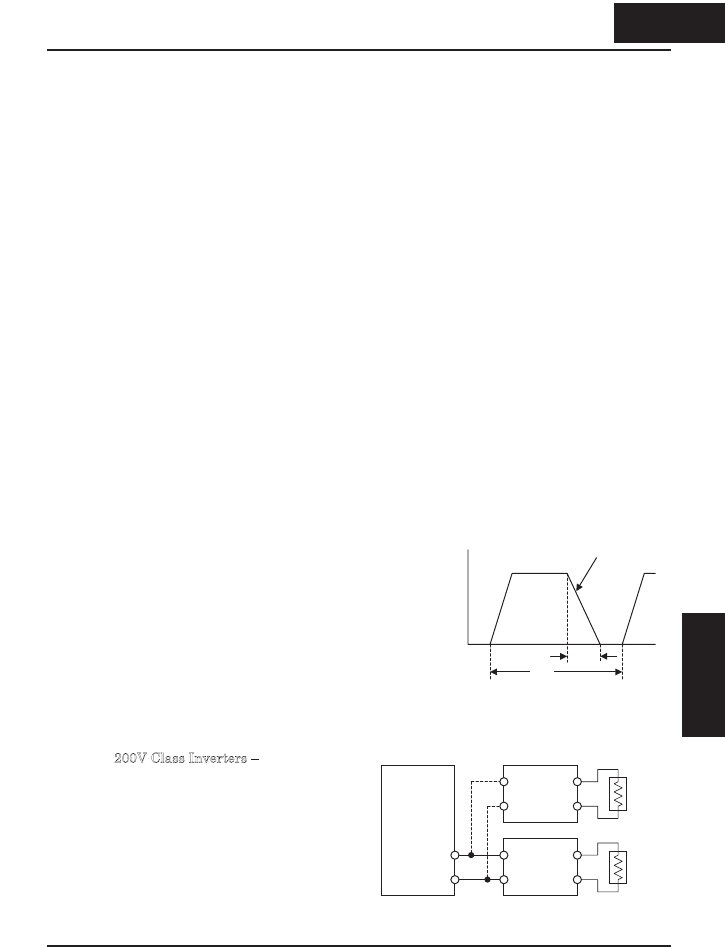
Dynamic Braking
Introduction
The purpose of dynamic braking is to improve the ability of the inverter to stop
(decelerate) the motor and load. This becomes necessary when an application has some
or all of the following characteristics:
x High load inertia compared to the available motor torque
x The application requires frequent or sudden changes in speed
x System losses are not great enough to slow the motor as needed
When the inverter reduces its output frequency to decelerate the load, the motor can
temporarily become a generator. This occurs when the motor rotation frequency is
higher than the inverter output frequency. This condition can cause the inverter DC bus
voltage to rise, resulting in an over-voltage trip. In many applications, the over-voltage
condition serves as a warning signal that we have exceeded the deceleration capabilities
of the system. The X200 inverter can connect to an external braking unit, which sends
the regenerative energy from the motor during deceleration to the optional braking
resistor(s). The dynamic braking resistor serves as a load, developing heat to stop the
motor just as brakes on an automobile develop heat during braking.
A switching circuit and power resistor are the main components of the dynamic braking
unit that includes a fuse and thermally activated alarm relay for safety. However, be
careful to avoid overheating its resistor. The fuse and thermal relay are safeguards for
extreme conditions, but the inverter can maintain braking usage in a safe zone.
Dynamic Braking Usage
Dynamic braking usage must follow
guidelines to avoid overheating. The timing
diagram to the right shows the output
frequency versus time. Dynamic braking is
in effect during the deceleration ramp, and
has the following constraints:
x Dynamic braking maximum duty cycle
= 10%, where Tb/Tc 0.1 sec.
Dynamic braking maximum continuous ON time
Tb 10 sec.
Selecting Braking Resistors for External Braking Units
200V Class Inverters The following
tables specify the braking options for
200V class X200 inverters and the
braking torque for each option. You can
connect a single braking unit to the
inverter, or two braking units for
additional stopping torque.
Output
freq.
Tc
Tb
t
Dynamic braking
Inverter
+
Braking
unit
Braking
unit
55
5 5
Inverter System
Accessories


















